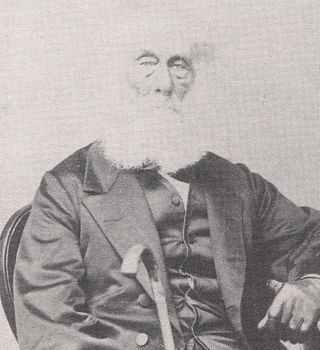At least four ships have borne the name Irlam. [lower-alpha 1]
- Irlam (1800 ship) was launched at Liverpool and wrecked in 1812.
- Irlam (1813 ship) was launched at Liverpool and wrecked in 1824.
- Irlam (1825 ship) was launched at Liverpool and wrecked in 1831.
- Irlam was launched at Liverpool after the loss of the vessel wrecked in 1831.
The same company, Barton & Co. (actually Barton, Irlam and Higginson), owned each of the first three vessels, and each was a West Indiaman, sailing between Liverpool and the West Indies, primarily Barbados. There is too little information on the fourth to be able to confirm or refute the possibility that Barton & Co. also owned it. She did trade between Liverpool and Barbados.

William Field Porter was a ship owner from Liverpool, who migrated to South Australia in 1838. He relocated to Auckland in 1841, where he became a member of the New Zealand Parliament.
A number of vessels have been named Alexander:
Several vessels have been named Harriet, or Harriot:
Irlam was launched in 1800 at Liverpool as a West Indiaman, sailing between Liverpool and Barbados. Although a merchantman and not a privateer, she made an unusually aggressive use of her letter of marque, capturing or recapturing four vessels. She wrecked on Tuskar Rock in 1812.
Irlam was a West Indiaman launched in Liverpool in 1813 for Barton & Co., which had lost an earlier Irlam in 1812. The current Irlam was of the same burthen as her predecessor, and was employed in the same trade, Liverpool to Barbados. She was wrecked in January 1824.
Barton was launched in 1794 as a West Indiaman, sailing primarily to Barbados. She was of average size for vessels launched at Liverpool at that time. She sailed under letters of marque and several times repelled attacks by French and Spanish privateers in single ship actions. Still, the Americans captured and burnt her in 1814.
Barton was launched at Liverpool in 1810 as a West Indiaman, trading primarily between Liverpool and Barbados. Her owners, Barton, Irlam and Higginson, had just sold another Barton and their new vessel was almost twice the size of her predecessor. One of her captains was involved in the manumission of over 40 slaves at Barbados. She was wrecked at Charleston, South Carolina, in December 1836.
Irlam was launched in 1825 at Liverpool for Barton & Co., which had lost two earlier vessels named Irlam: Irlam (1800 ship) in 1812, and Irlam (1813 ship) in 1824. The current Irlam was smaller than her predecessors, but was employed in the same trade, Liverpool–Barbados.
Bootle was launched in 1805 at Liverpool as a slave ship. She made two voyages delivering slaves to the West Indies before her owner sold her. She then became a West Indiaman. In 1811 the Liverpool partnership of Barton, Irlam and Higginson purchased her and sailed her between Liverpool and Barbados. A hurricane at Bridgetown, Barbados wrecked her in 1813.
Barton, Irlam and Higginson was a noted Liverpool firm of shipowners specializing in the trade with Barbados in the first half of the 19th century. The three partners were William Barton, George Irlam, and John Higginson. The firm made a practice of naming several of its vessels after the partners.
Maxwell was launched at Boston in 1798. She came into British hands in 1804 as a West Indiaman, trading between Liverpool and Barbados. She wrecked in January 1814.
Tiger was launched at Liverpool in 1800 as a West Indiaman. She made one voyage in 1806-1807 as a Liverpool-based slave ship in the triangular trade in enslaved people. After British participation in the trans-Atlantic enslaving trade ended in 1807, she returned to the West Indies trade. She also captured three American merchant vessels in 1813. She wrecked on 30 September 1819 with loss of life.
Several vessels have been named Paragon:
Cicero was launched at Sunderland in 1796 and initially sailed as a West Indiaman. She was briefly captured in 1799 in a single-ship action with a French privateer. Later, she went whale hunting both in the northern whale fishery (1803-1808), and the southern whale fishery (1816-1823). She capsized at Limerick in September 1832 and was condemned there.
Several vessels have been named Rachel or Rachael:
Several ships have been named Indian:
Several vessels have been named Venus for the planet Venus or the Roman goddess Venus:
Several vessels have been named Prince Regent for George IV, of England, who was Prince regent from 1811 to his accession to the throne in 1826:
This page is based on this
Wikipedia article Text is available under the
CC BY-SA 4.0 license; additional terms may apply.
Images, videos and audio are available under their respective licenses.
